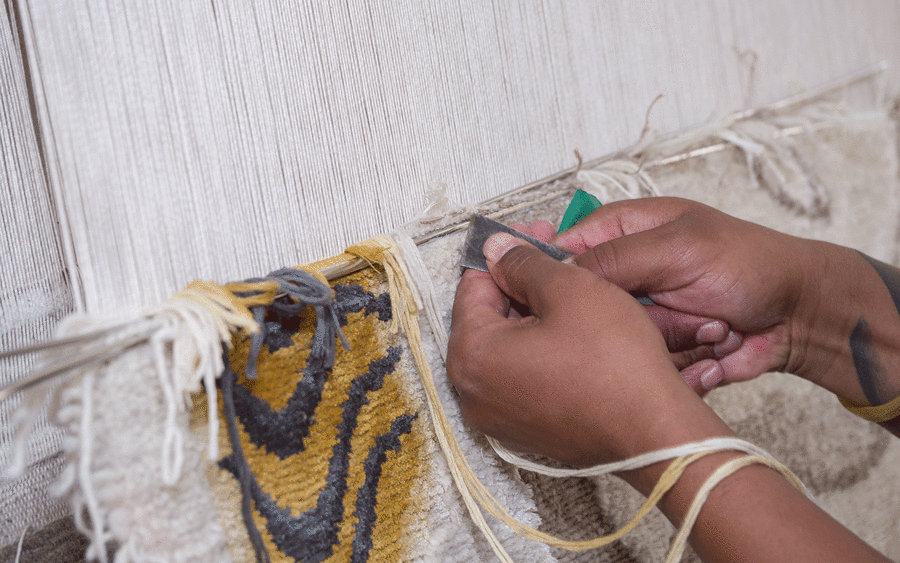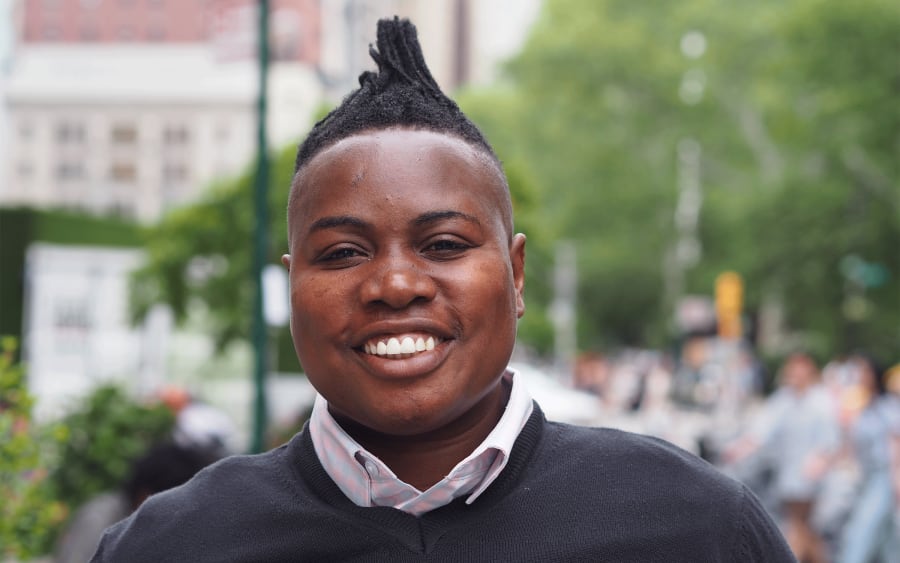Ethiopian artist Elias Sime is known for tracing the trade networks of a globalized world: The precious metals mined in Africa become electronic devices in East Asian factories before returning to Africa as consumer goods, which the artist dissects to highlight their formal beauty and material connection to the earth. Sime’s exhibition ‘Dichotomy ፊት አና ጀርባ,’ part of the Venice Biennale’s collateral program, underlines this part of his practice. The venue, Tanarte, opposite the entrance to the Arsenale, will be filled with large-scale reliefs of woven wire and mosaic-like murals of motherboards and computer keys, evoking landscapes and city skylines viewed from a kaleidoscopic array of perspectives. The exhibition is co-curated by Meskerem Assegued, who has closely collaborated with Sime for over two decades, and Felicity Korn of Kunstpalast Düsseldorf, which will present a comprehensive retrospective of Sime’s work opening in March 2025.
The exhibition title came first in English, and like many of Sime’s titles, it is simple but richly evocative. The Amharic equivalent, Assegued tells me, literally means ‘the front and the back’ but metaphorically refers to a person’s face and what lies behind it – the public and the private. Most of Sime’s electronics assemblages are grouped under the title ‘Tightrope,’ which also gives a metaphor to the thin lines that separate what people do and what they desire. ‘Dichotomy’ further links this duality to computer circuitry: ‘The images on the iPhone are so different from the circuitry and the design behind them,’ Assegued says. ‘You buy it for its look, not what’s behind it. People are just like that. There’s the face they show you, and the face you don’t know.’
The presentation of Sime’s large-scale panels, where openings in forests of green wire reveal logos of tech companies, is particularly striking in Venice, a city that has maintained its medieval appearance. It prompts reflection on how humans work with and against the environment to construct spaces conducive to life—a topic Sime has pursued over the last five years through public art projects in Addis Ababa. While such projects look quite different from his deconstructed electronics, they indicate his overall interest in the relationship between nature and technology.
Sime first became interested in electronics when Assegued remarked on computing’s reliance on precious metals mined from the earth. At his studio – a complex of corrugated metal sheds and wooden storehouses tucked behind a fence at Zoma Museum, a sustainable art center he co-founded with Assegued in Addis Ababa – stores of these components look to be on the verge of being reclaimed by nature. There is a heap of rotary phones, a stack of old beige CPUs, and green copper-tinged motherboards in massive piles, partially covered by tarps, fallen brown pine needles dangling from the edges like loose wires.
When I visited Sime’s studio with Assegued, it became clear that his output would not be so multifaceted and abundant if not for their collaboration, which has been ongoing for 25 years. Assegued – who spoke on Sime’s behalf due to his limited command of English as he nodded in assent – generates many of the concepts behind Sime’s works, though she says she is consistently amazed ‘by how the ideas are transformed in his hands.’ The two met around the turn of the millennium, when artists were enjoying greater freedom of expression following the collapse of Ethiopia’s socialist dictatorship. At that time Assegued organized several bold, experimental exhibitions – including a 2002 show on Addis Ababa’s central Meskel Square, after which all the works on view were burned – often with Sime’s participation. Yet Assegued’s main interest is vernacular architecture: She works to exhibit, preserve, and revive old construction techniques, like the brick archways that make traditional Ethiopian homes resilient; for Sime, this research has spurred an interest in mud and straw as sculptural materials.
Contrasting the manmade materials of the works in ‘Dichotomy’, mud and straw pervade several public projects Sime has carried out with Assegued in their home country, where he is recognized as an artist working across much different materials, aesthetics, and scales. For the 2019 opening of Unity Park, a well-manicured recreational space in the middle of Addis Ababa, Sime built a camel-shaped gallery and a tortoise-shaped café amid a beautiful garden of native plants. The pavilions at Zoma Museum, which also opened in 2019, feature mud-and-straw façades sculpted with various patterns – swirling meanders, rope-like coils, scalloped handprints. Beyond art galleries, the site also houses a café and a primary school with a curriculum that emphasizes independent thinking; the children make art, milk cows, and raise chickens. A grassy field offers space for relaxation, and winding paths lead visitors through gardens of herbs and indigenous plants. Opening later this year, Zoma Village, also built by Sime and Assegued, will be a community center with a library, coworking space, culinary school, and more in the mountainside Entoto Natural Park. Here, colorful ceramic mosaics and zoomorphic sculptures are interspersed among sinuous concrete structures that hug the landscape’s curves.
Fitting for an artist with a secondary identity as a builder, Sime is drawn to genres of sculpture with architectural applications: mosaics, reliefs, murals. His favorite materials – cement, stone, the ancient mixture of mud and straw – are as good for construction as they are for sculpture. When it comes to his assemblages, Sime rejects the term ‘found materials.’ His process of acquiring materials is deliberate, seeking rather than scavenging. His compositions determine what materials he needs as much as the materials spark compositional concepts. Sime thinks about the inherent properties of objects as well as how to apply them in unexpected ways – the sort of ingenuity that artists share with engineers.
In a rapidly developing city like Addis Ababa, competing agendas proliferate. Some prize sustainability, others prioritize efficiency. At the official level, Ethiopia has pursued several environmentally friendly projects, and Assegued says she noticed more of these after Prime Minister Abiy Ahmed visited Zoma Museum – an event that also led to the invitation for Sime to build at Unity Park. Even if governmental sustainability policies cannot be directly attributed to Sime’s influence, it is impossible to deny that he has had an impressive impact on the fabric of his city.
Sime and Assegued’s work projects a positive pathway for Ethiopia’s development, a life-affirming vision of what society can be like. ‘We try not to get involved in politics,’ Assegued says. ‘But there’s no running away from it. What we do is a kind of social activism. When you respond to issues that are on the surface, it becomes political.’ Some of Sime’s early works explicitly refer to his country’s history and society, like Peanut Vendor (1991), an oil painting also incorporating collaged parts of his father’s school uniform and the paper used to wrap peanuts sold on the street by children. But in most of his output, social commentary is oblique – or inserted by critics and curators.
Sime’s public work in Addis Ababa shows another face to the one on view in the works in Venice. But as different as strands of his work may seem – the forms and patterns he creates from collaged motherboards, the warm charm of a camel-shaped pavilion – they are enriched through their coexistence.
Elias Sime is represented by James Cohan Gallery (New York) and Grimm (Amsterdam, London, New York).
Brian Droitcour is editor-in-chief of Outland, an online magazine about digital art.
Caption for top image: Elias Sime in his studio. Photograph by Alice Hendy.
Published on April 12, 2024.


